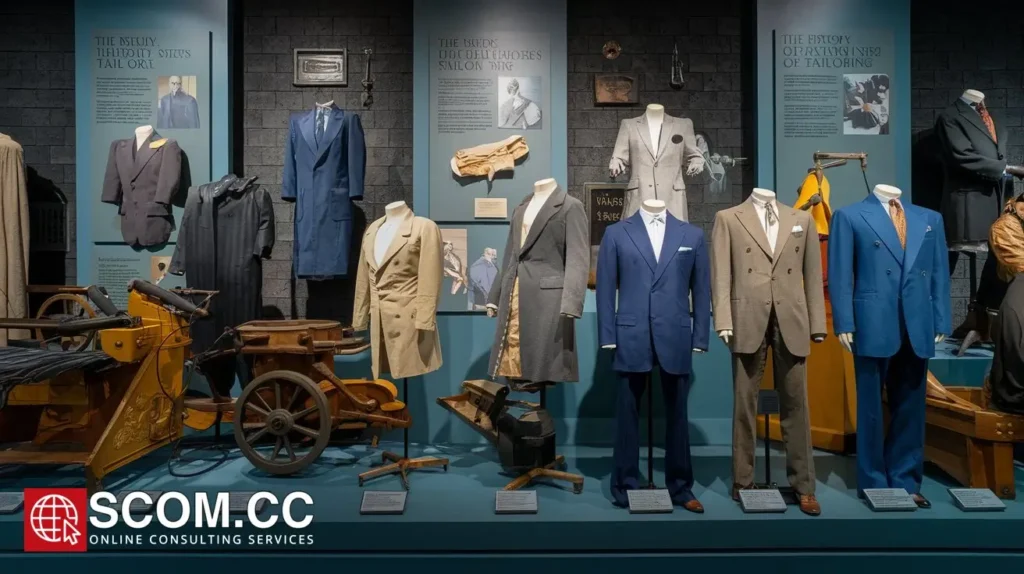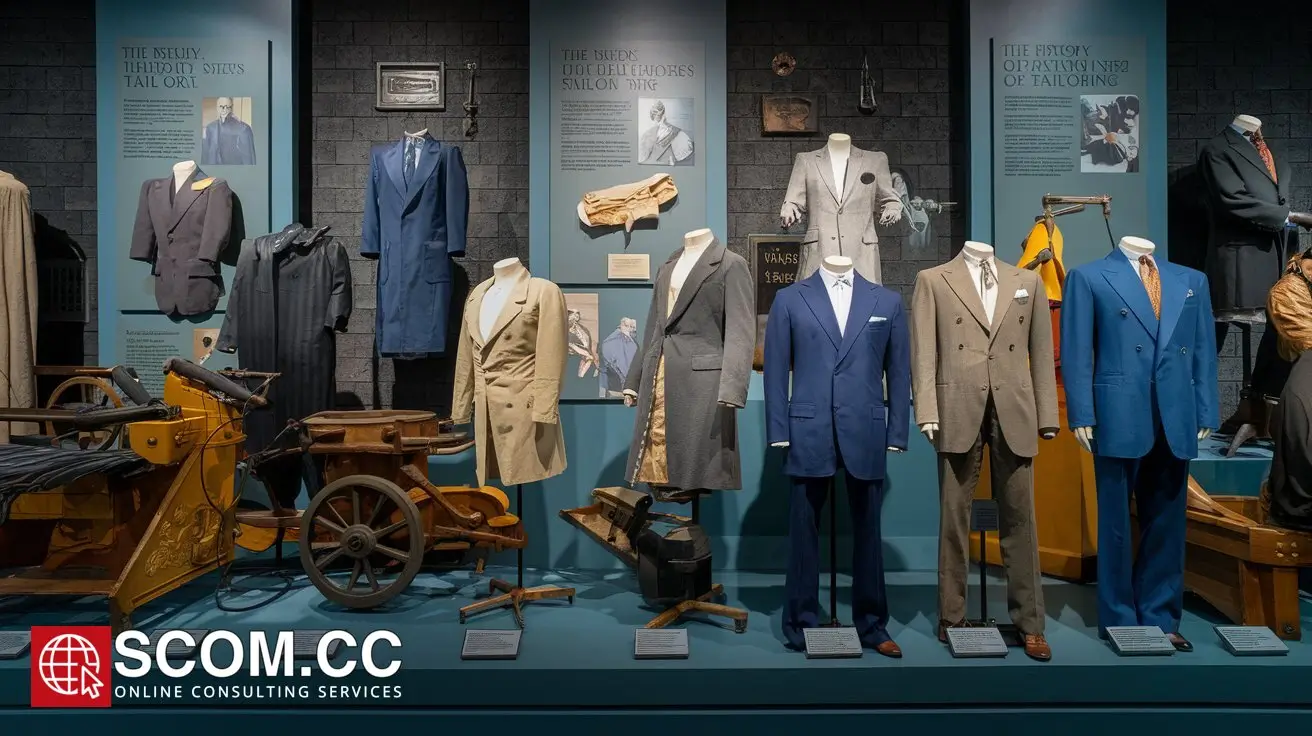What Major Historical Events Influenced the Development of Tailoring?

- What Major Historical Events Influenced the Development of Tailoring?
- The Industrial Revolution: A Turning Point for Tailoring
- World War I and World War II: Military Influence on Fashion
- The French Revolution: Political Change and Fashion
- The 1960s and 1970s: Cultural Revolutions and Tailoring
- The Digital Age: Technology and Tailoring
-
FAQ
- 1. How did the Industrial Revolution impact tailoring?
- 2. What was the significance of World War I in the development of tailoring?
- 3. How did World War II change the fashion industry?
- 4. How did the French Revolution affect fashion and tailoring?
- 5. What role did the Napoleonic Era play in shaping modern menswear?
- 6. How did cultural revolutions in the 1960s and 1970s influence tailoring?
- 7. What advancements has the digital age brought to tailoring?
- Conclusion: Tailoring in a Constantly Changing World
What Major Historical Events Influenced the Development of Tailoring?
Introduction: The Interplay of History and Tailoring
Tailoring, as both a craft and an industry, has been profoundly shaped by major historical events. Wars, revolutions, technological advancements, and cultural shifts have all left their mark on how clothes are made and worn. This article explores the key historical moments that have influenced the evolution of tailoring, examining how these events catalyzed changes in fashion, techniques, and the tailoring industry.
The Industrial Revolution: A Turning Point for Tailoring
Mechanization and Mass Production
The Industrial Revolution in the late 18th and early 19th centuries marked a significant turning point in tailoring. Before this period, tailoring was a highly manual and labor-intensive process. However, the advent of machinery, such as the sewing machine, revolutionized garment production.
Impact on Tailoring: The sewing machine, patented by Elias Howe and later perfected by Isaac Singer, allowed for faster and more precise stitching. This technology significantly reduced the time required to make garments, enabling tailors to produce clothing on a larger scale. Additionally, the rise of factories and textile mills facilitated mass production, making tailored clothing more affordable and accessible to a broader population.
The Birth of Ready-to-Wear Fashion
The Industrial Revolution also led to the rise of ready-to-wear fashion. Tailors began creating standardized sizes and patterns, which could be produced quickly and sold in bulk. This shift from bespoke tailoring to mass-produced garments changed the industry dramatically, laying the foundation for modern fashion retail.
World War I and World War II: Military Influence on Fashion
Utilitarianism and Functionality
The World Wars had a profound impact on tailoring and fashion, particularly during the first half of the 20th century. The focus shifted from luxury and opulence to utilitarianism and functionality. Military uniforms became a significant influence on civilian clothing, with designs emphasizing practicality and durability.
World War I: During World War I, fabric rationing and shortages forced tailors to adopt more practical approaches. The introduction of trench coats, for example, was a direct result of military needs. Originally designed for British soldiers, the trench coat soon became a staple in civilian wardrobes due to its versatility and durability.
World War II: The impact of World War II on tailoring was similarly profound. The war brought about fabric restrictions and a focus on simplified designs. Tailors had to work with limited materials, leading to the creation of styles that emphasized efficiency and minimalism. The boxy silhouette of the 1940s, with its broad shoulders and nipped waist, was influenced by military uniforms.
Post-War Prosperity and the Return of Luxury
After World War II, the world experienced a period of economic recovery and prosperity. This led to a resurgence of interest in luxury and high fashion. Christian Dior's 1947 collection, known as the New Look, epitomized this return to opulence. The New Look, with its emphasis on full skirts and cinched waists, represented a break from the austere styles of wartime and ushered in a new era of elegance in tailoring.
The French Revolution: Political Change and Fashion
The Rise of Simplified Fashion
The French Revolution (1789-1799) was not only a political upheaval but also a significant moment in the history of fashion. The revolution led to a rejection of the extravagant styles associated with the French aristocracy, such as elaborate wigs, powdered hair, and ornate clothing. In their place, more democratic and simplified fashions emerged, reflecting the ideals of equality and fraternity.
Influence on Tailoring: Tailors began creating clothing that was less ostentatious and more practical. The sans-culottes style, for example, which featured long trousers instead of knee breeches, became a symbol of the working class. This shift towards simpler, more functional clothing laid the groundwork for modern tailoring practices.
The Influence of Napoleonic Uniforms
The Napoleonic era also had a significant impact on tailoring, particularly in menswear. Napoleon Bonaparte's military uniforms, with their sharp cuts and elaborate detailing, influenced civilian fashion. The tailcoat, a key element of men's formal wear, was inspired by the military jackets worn by Napoleon's officers. This fusion of military and civilian styles would continue to shape tailoring for decades.
The 1960s and 1970s: Cultural Revolutions and Tailoring
The Youthquake and the Rise of Casual Fashion
The 1960s and 1970s were marked by cultural revolutions that challenged traditional norms in fashion and society. The youthquake movement, driven by the rise of youth culture, had a profound impact on tailoring. Young people began rejecting the formal, conservative styles of their parents in favor of more casual and expressive clothing.
Key Developments: The mod movement in Britain popularized slim-fitting suits, while the hippie movement embraced loose, flowing garments. Tailoring adapted to these new trends, incorporating bold patterns, bright colors, and unconventional cuts. The rise of denim as a fashion staple also signaled a shift towards more casual and versatile clothing.
Gender Fluidity and Androgynous Styles
The 1970s also saw the rise of gender fluidity in fashion, with designers like Yves Saint Laurent blurring the lines between masculine and feminine tailoring. The introduction of the women's trouser suit and the popularity of androgynous styles challenged traditional notions of gender-specific clothing. This period marked a significant shift in tailoring, with more inclusive designs that catered to diverse identities.
The Digital Age: Technology and Tailoring
The Rise of Digital Tailoring
The digital age has brought about significant changes in the world of tailoring. The advent of computer-aided design (CAD) and 3D body scanning technology has revolutionized how garments are designed, fitted, and produced.
Impact on Tailoring: Digital tailoring allows for precise measurements and customized fits, reducing the need for multiple fittings and alterations. Online tailoring services have also emerged, enabling customers to order bespoke garments from the comfort of their homes. These technological advancements have made tailoring more accessible and efficient, while still maintaining the craftsmanship and attention to detail that define the industry.
Sustainability and Ethical Fashion
In recent years, the fashion industry has faced growing pressure to adopt more sustainable and ethical practices. Tailors are increasingly embracing eco-friendly materials and sustainable production methods in response to consumer demand for environmentally conscious clothing. The rise of the slow fashion movement, which emphasizes quality over quantity, has also led to a renewed appreciation for traditional tailoring techniques.
Table Summarizing Major Historical Events and Their Impact on Tailoring
| Historical Event | Time Period | Impact on Tailoring |
|---|---|---|
| Industrial Revolution | Late 18th - 19th Century | Introduction of sewing machines, mechanization of garment production, rise of ready-to-wear fashion, mass production of clothing. |
| World War I | 1914 - 1918 | Focus on utilitarian and practical designs, introduction of military-inspired styles like the trench coat. |
| World War II | 1939 - 1945 | Fabric rationing, simplified designs, and the rise of minimalist fashion; post-war return to luxury and opulence (e.g., Dior's New Look). |
| French Revolution | 1789 - 1799 | Shift to simplified, democratic fashion; rejection of aristocratic styles; rise of practical and functional clothing. |
| Napoleonic Era | Early 19th Century | Influence of military uniforms on civilian fashion, introduction of the tailcoat in menswear. |
| 1960s and 1970s Cultural Revolutions | 1960s - 1970s | Rise of casual fashion, bold patterns, gender-fluid styles, and the influence of youth culture on tailoring. |
| Digital Age | 21st Century | Digital tailoring technologies, online tailoring services, and the rise of sustainable fashion practices. |
FAQ
1. How did the Industrial Revolution impact tailoring?
The Industrial Revolution introduced sewing machines and mass production techniques, which revolutionized the tailoring industry. It made clothing production faster, more precise, and more accessible to the general public through the rise of ready-to-wear fashion.
2. What was the significance of World War I in the development of tailoring?
World War I influenced tailoring by emphasizing utilitarian and practical designs. Military styles, such as the trench coat, became popular in civilian fashion due to their functionality and durability.
3. How did World War II change the fashion industry?
World War II led to fabric rationing and a focus on minimalist designs. Post-war, there was a resurgence in luxury fashion, exemplified by Christian Dior's New Look, which emphasized femininity and opulence.
4. How did the French Revolution affect fashion and tailoring?
The French Revolution led to a rejection of aristocratic fashion in favor of more democratic and simplified styles. Tailoring became more practical, with an emphasis on clothing that reflected the ideals of equality.
5. What role did the Napoleonic Era play in shaping modern menswear?
The Napoleonic Era influenced menswear through the adoption of military-inspired styles, particularly the tailcoat. This blending of military and civilian fashion became a staple in men's formal wear.
6. How did cultural revolutions in the 1960s and 1970s influence tailoring?
The cultural revolutions of the 1960s and 1970s brought about casual fashion trends, bold patterns, and gender-fluid styles. Tailoring adapted to these changes by incorporating more expressive and inclusive designs.
7. What advancements has the digital age brought to tailoring?
The digital age has introduced technologies such as computer-aided design (CAD) and 3D body scanning, which allow for precise measurements and customized fits. Online tailoring services and sustainable fashion practices have also emerged, making tailoring more accessible and eco-friendly.
Conclusion: Tailoring in a Constantly Changing World
The history of tailoring is deeply intertwined with major historical events. From the Industrial Revolution to the digital age, each era has left its mark on how clothes are made and worn. As we move forward, tailoring will continue to evolve in response to new challenges and opportunities, ensuring that this timeless craft remains relevant in a rapidly changing world.

To explore more about tailoring, visit our Blog of Tailoring. If you have any questions or need assistance, go to our contact page. Additionally, you can find more information about tailoring and consulting at this tailoring and consulting portal.

Leave a Reply